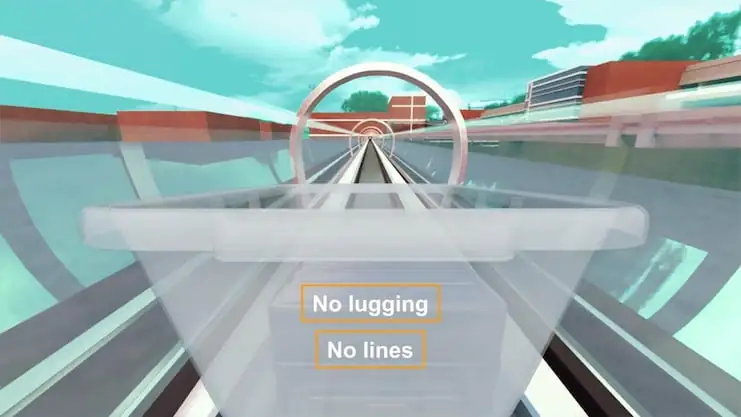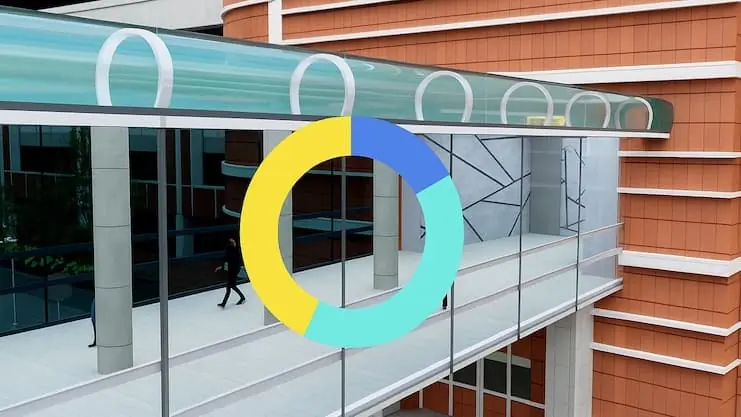
Airport baggage systems have seen little change in over five decades. As airports face growing passenger volumes and aging infrastructure, the need for a smarter, leaner, and tech-enabled solution has become more urgent than ever.
Tubular Network envisioned a world where passengers could check bags right at the parking lot and move through terminals hands-free.
What This Unlocks
- Effortless bag drop at curbside or remote parking
- Direct, secure transfer to airport screening
- Streamlined, faster passenger journeys
- Reduced dependency on outdated conveyor belts
The opportunity wasn’t just to upgrade infrastructure – but to reimagine it entirely.

The Collaboration
Tubular Network, a robotics startup with a background in aerospace automation, introduced a bold concept: AI-powered autonomous shuttles operating within Tubular’s Solution to transport baggage directly from parking to screening zones – without disruptive airport overhauls.
SuperDNA 3D Lab, a leader in advanced digitization, created a high-fidelity digital twin of the airport. Utilizing real data and Cesium geospatial technology, SuperDNA 3D Lab enabled precise, interactive simulations for stakeholders to visualize, test, and refine new baggage handling processes, accelerating decision-making.

The Visualization Challenge
Before pursuing large-scale adoption, stakeholders across aviation and infrastructure needed to better visualize the proposed system.
The digital simulation needed to:
- Simulate the 3D model through the complete baggage journey
- Illustrate peak scenarios and congestion flow to reveal bottlenecks
- Highlight vertical transportation via pedestrian bridges
- Visualize baggage handoff into the Tubular kiosk
- Show the adaptability of the tubular infrastructure within existing airport layouts
Bringing the Vision to Life
SuperDNA 3D Lab deployed a full-scale digital twin of a US-based airport terminal using detailed architectural inputs, GIS data, and operational parameters.
This high-fidelity simulation demonstrated:
- Exact routing of tubes from parking areas to screening points
- Continuous autonomous shuttle movement
- Baggage throughput of 775+ bags/hour modeled in one pilot route in flow scenarios
- Luggage-free passenger journey throughout the airport
- Seamless integration with pedestrian pathways and sky bridges across vertical and horizontal infrastructure
While not a live deployment, this digital simulation provided a dynamic, motion-based understanding of how the system could work – offering stakeholders a practical look at an innovative future.
“Our simulation turned the vision of a next-generation baggage journey into a tangible reality, said Jatinder Kukreja, CEO of SuperDNA 3D lab, “highlighting the unique advantages of Tubular Network technology for airports.”

Passenger and Airport Benefits: Unlocking New Efficiencies
For Passengers:
- Seamless Bag Drop: Check bags at the parking lot and enjoy a hands-free journey through the terminal.
- Faster, Smoother Check-In: Experience reduced wait times and less crowding at check-in counters.
- Stress-Free Travel: Enjoy a contactless and hassle-free start to your trip.
- Future-Ready Convenience: Potential for automatic bag pickup upon return, making the journey even more effortless.
For Airports
- Reduced Terminal Congestion: Streamlined baggage handling eases crowding within the terminal.
- Enhanced Labor Efficiency: Optimized operations free up staff for higher-value tasks.
- Flexible, Scalable Design: Easily adapts to existing airport layouts and future expansion.
- Unlocks New Revenue Opportunities: Frees up valuable space for retail, lounges, or other passenger services.

Looking Forward: Expanding Innovation Beyond Baggage
Building on the insights gained from this implementation, Tubular Network and SuperDNA 3D Lab are charting a path to expand the boundaries of airport and transportation innovation.
Expanding Use Cases Across Aviation and Transportation
- Beyond Baggage: The success of this project has opened the door to new applications. Both teams are now exploring how this technology can streamline other airport operations, such as:
- Smart Cargo Routing: Enhancing the handling and tracking of air cargo and express parcels for improved efficiency and security.
- Automated Crew Equipment Transport: Rapidly move maintenance tools, safety equipment, and spare parts between terminals and gates, ensuring crews have what they need exactly when and where it’s required.
Leveraging Advanced Geospatial Data
- Outdoor Precision: With SuperDNA 3D Lab’s integration of Cesium’s geospatial data, digital twins now offer even more accurate representations of outdoor airport environments. This allows for precise planning of land-side logistics, parking management, and curbside passenger flows.
A Model for Future Projects
- From Concept to Reality: This collaboration has established a repeatable model for innovation—spanning initial scoping and design, through digital twin simulation, to real-world implementation.
- Scalable Solutions: The approach is adaptable, supporting projects from major international airports to regional transit hubs and even urban transportation networks.
- Continuous Learning: Each deployment informs the next, ensuring that solutions evolve with the needs of airports, passengers, and the broader transportation ecosystem.
 Jatinder Kukreja is founder & CEO of SuperDNA 3D Lab.
Jatinder Kukreja is founder & CEO of SuperDNA 3D Lab.
 Ben James is Cofounder & CEO of Tubular Networks.
Ben James is Cofounder & CEO of Tubular Networks.
Header image credit: Artur Tumasjan on Unsplash

